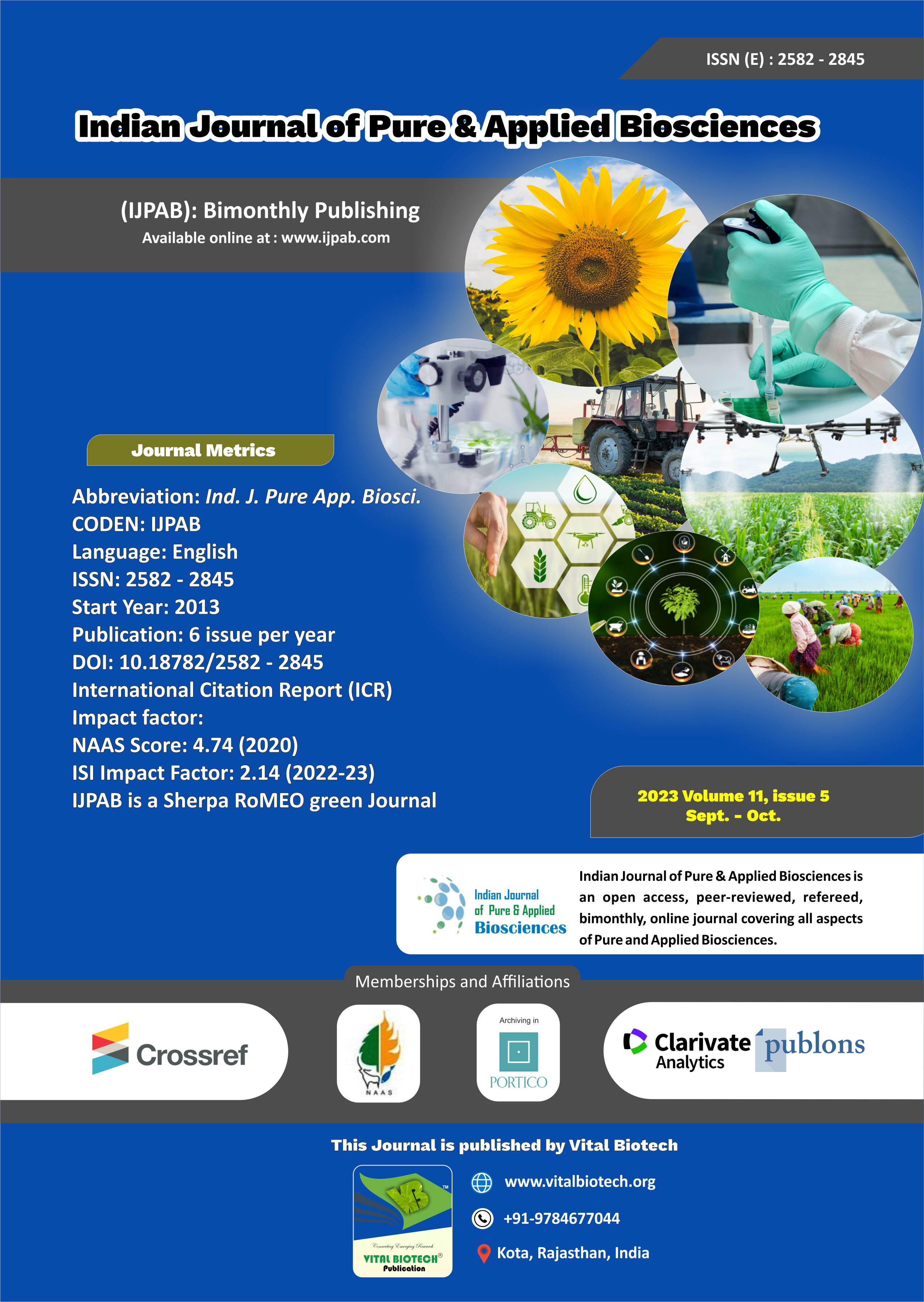-
No. 772, Basant Vihar, Kota
Rajasthan-324009 India
-
Call Us On
+91 9784677044
-
Mail Us @
editor@ijpab.com
Indian Journal of Pure & Applied Biosciences (IJPAB)
Year : 2023, Volume : 11, Issue : 5
First page : (45) Last page : (53)
Article doi: : http://dx.doi.org/10.18782/2582-2845.9027
Impact of Climate Change on Flowering Phenology and Abundance on Mertensia spp.
Muhammad Saad Umar1*, Arsalan Ali2, Sehar Naeem3, Nadia Shaheen1, Hafiza Mubeen Hayat1 ![]() , Abdul Hannan Afzal4, Usama Shakeel5
, Abdul Hannan Afzal4, Usama Shakeel5
1Department of Horticulture, College of Agriculture, University of Sargodha, Pakistan
2Department of Agronomy, Faculty of Agricultural Sciences, The University of Punjab, Lahore
3Department of Biosciences, Comsats University, Islamabad
4Department of Plant Breeding and Genetics, College of Agriculture, University of Sargodha
5Department of Extension and Rural Studies, College of Agriculture, University of Sargodha
*Corresponding Author E-mail: saadumar289@gmail.com
Received: 13.07.2023 | Revised: 22.09.2023 | Accepted: 10.10.2023
ABSTRACT
This research article delves into the intricate dance between climate change and two enchanting flower species, Mertensia fusiformis and M. ciliata. These blossoms, with their nodding blue petals and elegant foliage, grace the Great Basin and alpine meadows. However, their delicate beauty conceals a resilient spirit, tested by the relentless forces of climate change. We explore the physiology of these flowers, uncovering the influence of rising temperatures on their flowering patterns. M. fusiformis tends to bloom earlier, adapting to shifting climatic cues. In contrast, M. ciliata shows variations in flower size and coloration. The consequences of climate change ripple through these species' distribution and habitat suitability. Warmer temperatures propel M. fusiformis to higher elevations, where it faces new challenges and competition. M. ciliata experiences habitat loss as alpine treelines ascend, pushing it into crevices and microclimates. These flowers' pollination mechanisms also adapt to changing conditions, with shifts in pollinator behavior and abundance disrupting their age-old partnerships. Conclusively, climate change orchestrates a captivating yet disquieting symphony in the lives of Mertensia fusiformis and M. ciliata. They stand as messengers, urging us to acknowledge the fragility of our ecosystems and take action to preserve the beauty of our planet's flora.
Keywords: Mertensia fusiformis, climate change, flowering, temperatures
Full Text : PDF; Journal doi : http://dx.doi.org/10.18782
Cite this article: Umar, M. S., Ali, A., Naeem, S., Shaheen, N., Hayat, H. M., Afzal, H. A., & Shakeel, U. (2023). Impact of Climate Change on Flowering Phenology and Abundance on Mertensia spp., Ind. J. Pure App. Biosci.11(5), 45-53. doi: http://dx.doi.org/10.18782/2582-2845.9027


